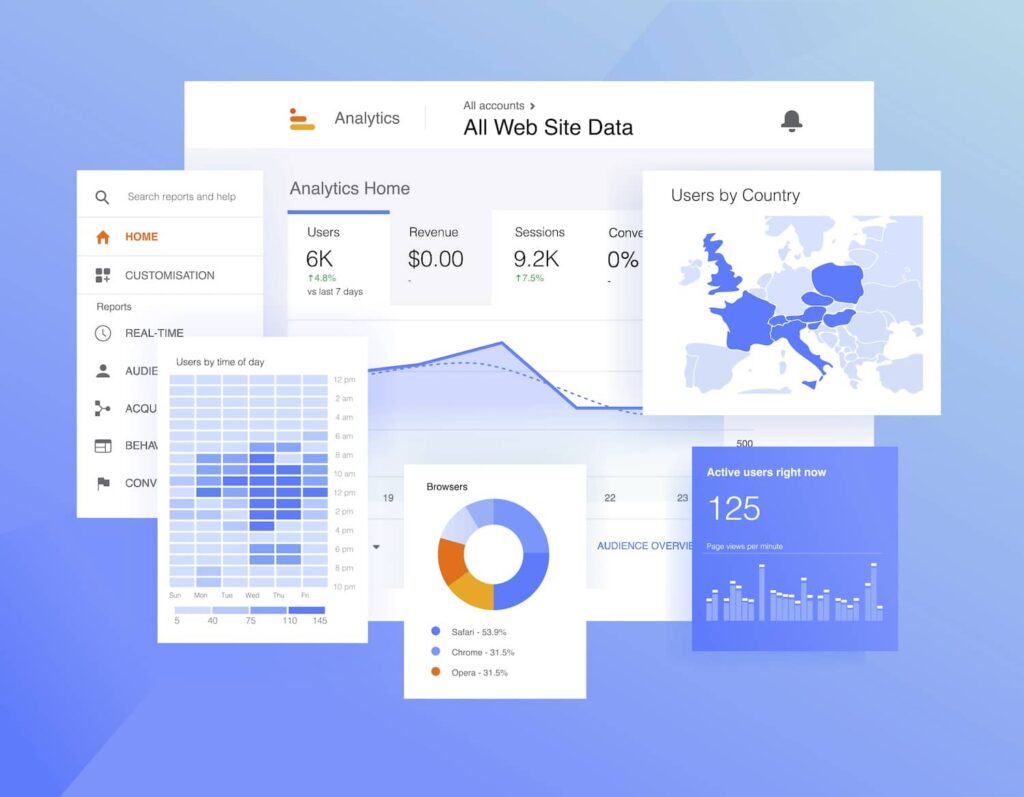Optimizing Your Data Analysis With Second Dimension in Google Analytics for Informed Decision-Making
In the world of digital analytics, the capability to remove meaningful insights from information is critical for making notified choices that drive company success. Google Analytics, an effective device in the hands of digital online marketers and experts, offers a function known as Additional Dimension. This often-underutilized feature has the potential to discover a wide range of information that can supply a deeper understanding of customer habits and web site efficiency. By taking advantage of the capacities of Secondary Measurement, individuals can acquire an extra thorough view of their data, allowing them to make tactical choices based on a much more in-depth and nuanced analysis.
Understanding Additional Measurement Performance
Comprehending the second measurement capability in Google Analytics improves the depth of information analysis by giving extra context to key metrics. By incorporating a second dimension, analysts can segment and compare information, gaining insights that would certainly or else stay surprise. This attribute permits users to watch information through different lenses, such as the source of traffic, individual habits, or geographic location, supplying a much more comprehensive understanding of internet site performance.
Utilizing additional measurements can expose patterns and relationships that might not appear when looking solely at main metrics. Matching the key metric of web page sights with a secondary dimension like device classification can reveal whether particular gadgets drive even more traffic to details pages. This information can after that inform website optimization approaches tailored to various device individuals.
Executing Additional Measurement in Reports
Structure upon the insights obtained with secondary measurement evaluation, integrating these dimensions successfully right into records in Google Analytics is important for removing actionable data-driven decisions. what is a secondary dimension in google analytics. By applying secondary dimensions in reports, individuals can dig much deeper right into the efficiency metrics of their website or app. This function permits an extra thorough evaluation by giving additional context to the key dimension picked
To carry out a secondary dimension in reports, merely navigate to the wanted report in Google Analytics and click the "Additional measurement" tab situated over the data table. From there, individuals can pick from a vast array of secondary measurements such as 'Source/Medium', 'Tool Category', or 'Landing Page'. Picking one of the most pertinent additional dimension will certainly depend upon the particular insights you are looking for to discover.
Utilizing secondary measurements in reports not just improves the depth of evaluation yet additionally aids in identifying fads, patterns, and connections that may have or else gone unnoticed. This strategic technique to data analysis makes it possible for services to make informed choices that drive development and success.

Studying Information With Additional Dimensions
Upon integrating additional measurements right into information evaluation within Google Analytics, a detailed evaluation of vital efficiency indications can be attained, supplying valuable insights for tactical decision-making. By making use of second dimensions, experts can additionally study their primary information dimensions, such as website traffic resources or user demographics, to reveal patterns or fads that might not be instantly obvious. This much deeper degree of analysis allows for a more detailed understanding of customer habits and communications on a web site or digital system.
Examining data with secondary measurements allows their explanation marketers and website proprietors to respond to more details inquiries concerning their audience, content efficiency, and advertising and marketing initiatives. For circumstances, by integrating the key dimension of web traffic resources with a second measurement like geographical place, businesses can recognize which regions drive the most useful traffic to their website. This type of granular insight can inform marketing approaches, material development, and website optimization initiatives to much better accommodate the requirements and preferences of their target audience.
Leveraging Second Dimensions for Insights
By including secondary dimensions properly, analysts can draw out much deeper understandings from data sets in Google Analytics, boosting the understanding of user behavior and efficiency metrics. Leveraging second measurements involves integrating various attributes or metrics with primary data to reveal patterns and fads that may not be obvious at initial look. By adding an additional measurement such as 'Tool Category' to a report on site traffic, experts can useful reference recognize whether customer behavior varies across different gadgets like desktops, mobile phones, or tablets.
Furthermore, utilizing secondary measurements permits analysts to segment information more granularly, allowing them to identify particular audience segments or geographic locations that exhibit distinct behaviors. what is a secondary dimension in google analytics. This segmentation can be instrumental in tailoring advertising techniques, enhancing site material, or enhancing user experience based on the special features of each sector
In essence, leveraging secondary dimensions in Google Analytics empowers analysts to delve much deeper right into data, obtain significant understandings, and make educated choices that drive organization development and success.
Enhancing Decision-Making Via Additional Measurements
Utilizing secondary measurements in data analysis gives a critical benefit by revealing workable insights that drive informed decision-making in Google Analytics. By enhancing decision-making via secondary dimensions, customers can delve much deeper right into their data to draw out important details that may not be instantly noticeable. These extra measurements provide an even more detailed view of individual habits, interactions, and results, enabling experts to make more informed decisions based upon concrete data.
Through the application of second dimensions, experts can section and filter data to determine patterns, trends, and connections that might influence decision-making procedures. This enhanced level of granularity permits for an extra targeted method to assessing information, resulting in more insightful and accurate final thoughts.
Moreover, secondary dimensions provide the possibility to contrast various information original site factors alongside, facilitating an extra complete assessment of performance metrics and KPIs. By leveraging second dimensions efficiently, businesses can maximize their techniques, enhance user experiences, and inevitably attain their objectives with confidence.
Conclusion

Structure upon the insights gotten via additional measurement analysis, integrating these measurements effectively right into reports in Google Analytics is critical for drawing out actionable data-driven decisions.To apply an additional dimension in records, simply navigate to the wanted record in Google Analytics and click on the "Second dimension" tab situated over the information table. By using secondary measurements, experts can better explore their primary data measurements, such as traffic resources or user demographics, to reveal patterns or fads that might not be quickly apparent. By combining the primary dimension of traffic resources with a secondary measurement like geographical area, businesses can determine which regions drive the most important web traffic to their site.By integrating secondary dimensions efficiently, analysts can draw out deeper insights from information collections in Google Analytics, enhancing the understanding of user behavior and performance metrics.
 Judge Reinhold Then & Now!
Judge Reinhold Then & Now! Danielle Fishel Then & Now!
Danielle Fishel Then & Now! Nicki Minaj Then & Now!
Nicki Minaj Then & Now! Peter Billingsley Then & Now!
Peter Billingsley Then & Now! Rossy de Palma Then & Now!
Rossy de Palma Then & Now!